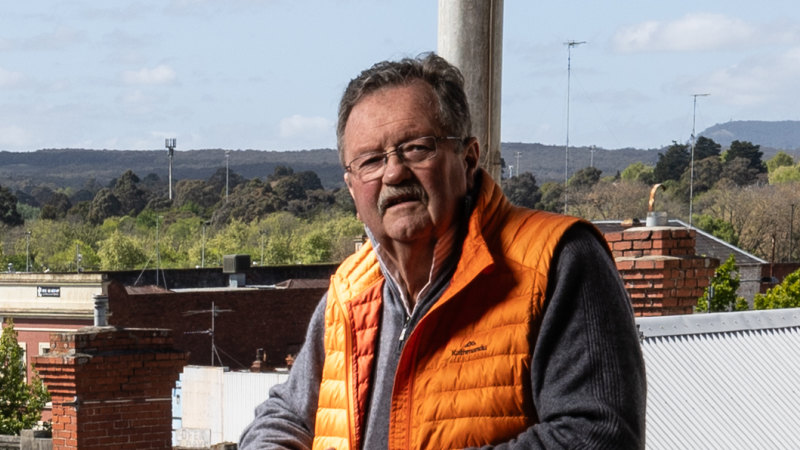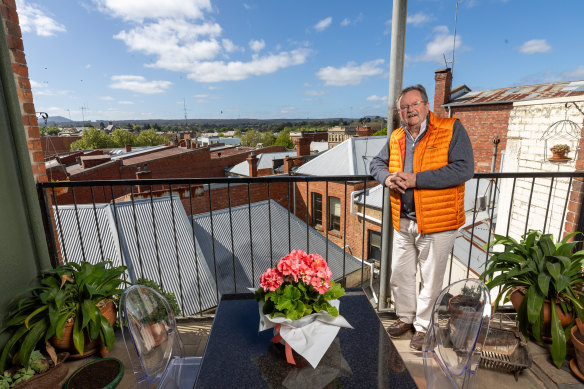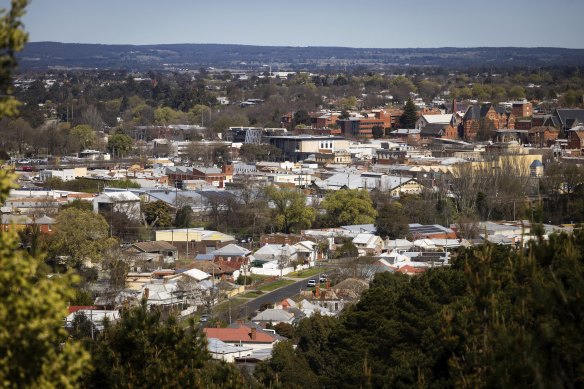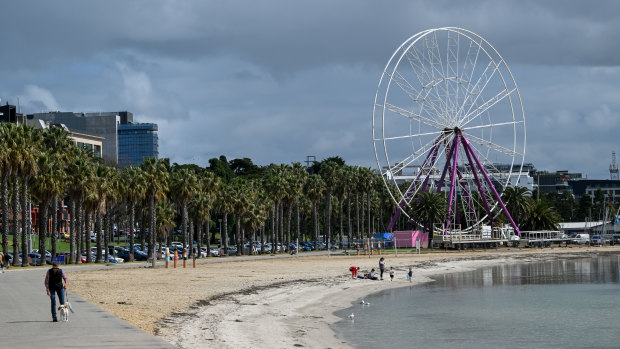
James lives in an apartment in Ballarat’s CBD, the future of regional living
October 19, 2023Save articles for later
Add articles to your saved list and come back to them any time.
Standing on his apartment balcony, James Coghlan espouses the benefits of being a short walk from shops, a cinema and an art gallery.
But he’s not in the CBD or metropolitan Melbourne, he’s instead looking out on Ballarat, where he and his wife moved from their large family home of 47 years to a smaller home with less maintenance.
James Coghlan on the balcony of his Ballarat apartment, which looks over the city. Credit: Jason South
If Infrastructure Victoria has its way, many more people will be living just like the Coghlans – in compact urban developments across our regional city centres.
“It’s just so gorgeous,” Coghlan said, looking out on the extinct volcano that became Mount Buninyong rising in the south and the forest of Mount Warrenheip to the east.
But Coghlan, a former mayor of Ballarat, said the CBD, which currently houses about 600 residents, could easily accommodate many more – particularly in the rooms above shops.
“Clearly they’re empty, or they’re used as storage for the businesses below,” he said.
A view of Ballarat East from the Black Hill lookout. Credit: Paul Jeffers
Encouraging more housing in established areas will grow regional economies while preserving farmland and natural habitats, the Choosing Victoria’s Future report says.
Infrastructure Victoria chief executive Jonathan Spear said Ballarat, Geelong and Bendigo could take a different path to what Melbourne has done historically, by choosing to be more compact.
“There’s a real opportunity now for regional cities to avoid becoming sprawling and dispersed,” he said.
The report modelled a snapshot of a future with rapid population growth in regional Victoria’s three biggest cities.
Infrastructure Victoria wants regional cities, including Bendigo, to rein in sprawl and build more homes in established areas.Credit: Joe Armao
In the greatest population growth scenario, Ballarat would increase from 120,000 residents in 2021 to 370,000 in 2056, Bendigo from 122,000 in 2021 to 350,000 and Geelong from about 274,000 to 720,000.
Infrastructure Victoria argues people will be better off when new homes are built in regional centres’ established areas, rather than being spread across small towns and rural areas.
“Concentrating home building in regional centres would use up less land, helping preserve farmland and natural habitats,” the report said.
It said living in more compact cities would bring residents closer to jobs, services and infrastructure, while delivering more variety in housing choices.
Geelong would have a population of more than 700,000 by 2056 under a scenario modelled by Infrastructure Victoria. Credit: Eddie Jim
It also recommends improving digital and transport connections to keep the regions economically competitive.
The report examined a “network of cities” model for Ballarat, Bendigo and Geelong in which the regional centres build more than 15,000 homes each year between 2036 and 2056 and become major economic hubs with vibrant city centres, improved transport and strong agriculture and clean-energy sectors.
According to the report, urban growth boundaries around regional centres would also help encourage more townhouses and apartments.
The “network of cities” model offered fewer economic benefits than more compact scenarios. But Infrastructure Victoria said developing industries, including renewable energy and recycling, while building TAFE and university facilities, would help improve economic growth.
By comparison, a “distributed state” – in which many more people live in rural areas and small towns – would mean many more car trips and hard-to-reach jobs and services.
The distributed state scenario would also need 34,000 hectares of land – twice as much as a compact city – reducing the area available for wildlife and agriculture.
Regional Cities Victoria chair Andrea Metcalf said regional centres would need upgraded power, water and sewage infrastructure if they were to accommodate a large increase in residential population.
She said this “enabling infrastructure” could be funded by Victoria’s windfall gains tax, which applies to land that is subject to government rezoning that results in it becoming more valuable.
But Metcalf said denser populations in city centres would make them more vibrant and improve their nightlife.
“It’s safer when there are more people around,” she said.
Coghlan has just one main gripe about living in Ballarat’s CBD – his closest all day parking option is about 250 metres away.
“It’s an issue that might be a problem for potential CBD dwellers,” he said.
Start the day with a summary of the day’s most important and interesting stories, analysis and insights. Sign up for our Morning Edition newsletter.
Most Viewed in National
From our partners
Source: Read Full Article





